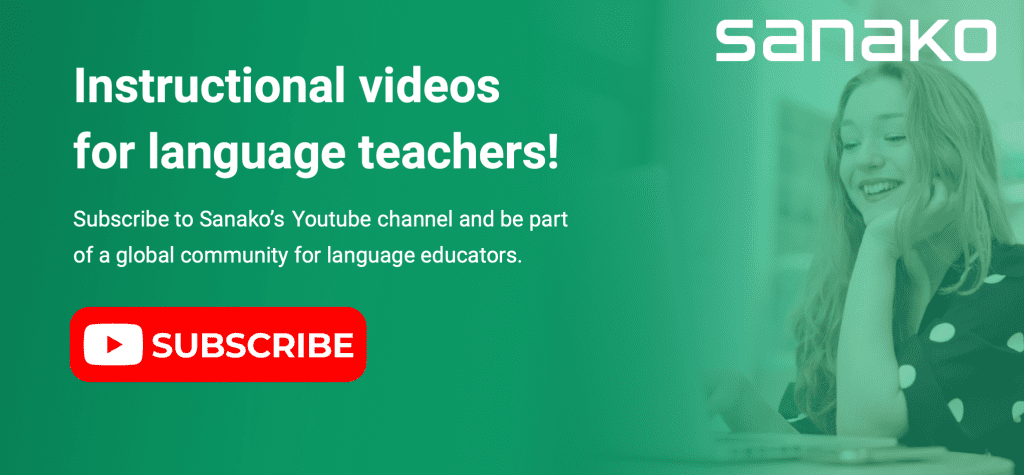Accelerated by the Covid-19 pandemic, the world of education and learning is undergoing a seismic transformation. Whether that’s through a new wave of generative AI tools or via increasing use of Web 3 and the blockchain, there’s a rapidly increasing array of tech tools available for educators of all subjects to use.
Yet, despite the fanfare greeting their arrival and the widespread availability of such solutions, some in education have responded to such advances with fear and concern. ChatGPT has, for example, already been banned by numerous universities and local governments. (If you’re interested in how ChatGPT could influence language teaching, then check out our dedicated post here: “How will ChatGPT influence & impact language education”.)
More worryingly, in a 2020 survey for England’s Department for Education, 50% of teachers identified the main barrier to using EdTech as lack of staff knowledge about what products do. Nearly 40% of teachers went further, claiming that a lack of teacher confidence was the biggest barrier whilst 6% of teachers surveyed actually stated that “teachers in my school are not willing to use EdTech.”
So if using digital learning tools offers educators a chance to reduce workload and improve outcomes, how can all teachers develop knowledge and confidence in their use? This blog post therefore highlights six different ways in which educators (and language teachers in particular) can build a tailored CPD programme that builds their EdTech skills and expertise.
Before embarking on the below, a good place to start is to conduct a skills audit to assess your level of confidence and skills. This gives a clear baseline to work from and this period of self-assessment / reflection can help identify areas of weaknesses or product-specific skills that need improvement. When you’re clear where the biggest impact can be made, a plan can be developed to address your concerns and once sorted, additional EdTech initiatives or technologies can be slowly added to the mix.
1. Social media
Whatever social network you prefer, there’s a wealth of education and technology insight and expertise hiding behind all those cat videos. In fact, social media enables educators to easily build and develop their own online personal learning networks (PLNs). Such communities allow you to meet and talk with like-minded educators, to learn from their ideas, get their feedback on yours and to share classroom resources / best practice.
Using a few relevant hashtags (try for example #mfltwitterati on Twitter) and a little care and discretion are perhaps the easiest and quickest ways to identify who you might want to follow. It’s easy to visit multiple different accounts to see what they’re posting and how it might help / support your work. When you find someone of interest, it’s always worth looking at who they follow or who follows them to build your network even further. Also check out who comments on or likes the posts of your favourite commentators – there’s gold in those responses.
For more practical hints and tips about using social media to support your teaching, make sure to read our dedicated blog post on social media’s language teaching community.
2. EdTech events
As well as connecting virtually with peers and experts, there’s nothing like meeting up, whether that’s face-to-face or virtually. The opportunity to “spark ideas, create connections and accelerate trade, driving impact and improving outcomes for teachers and learners” underpins the Bett Show, one of the largest EdTech events in the world, but you’ll be able to find your local or regional events that have the same focus and objectives.
The best events recognise that educators work tirelessly and frequently reskill and upskill to help more of their students achieve their language learning ambitions. Many events therefore make their sessions CPD-accredited, so the learning can count towards your ongoing training.
3. Courses and resources
Language educators can access a wealth of high-quality resources from well-established providers to enhance and support their professional development. These include formally assessed and certified courses – over 350,000 teachers globally are, for example, currently studying “Teaching English Online” with Cambridge Assessment English. Whereas more than a thousand teachers are enrolled in FutureLearn’s “Innovation in EdTech: Hacking the Challenges of Digital Education” course.
But there’s also a wide range of free material produced by learning resource providers such as Cambridge English and OUP to help and support language educators. International teaching associations such as TESOL do provide significant CPD content, although their complete course archive is limited to their members. And, of course, make sure that you’re following your favourite EdTech providers (including Sanako!) on social media to keep on top of their very latest CPD updates.
4. Learning by doing
One of the most effective ways of building your tech skills and confidence is by making more regular use of them. Try to include opportunities for CPD in everyday tasks and make those opportunities as realistic and relevant as possible. Start, for example, by using PowerPoint to build lesson presentations and work towards using more advanced Generative AI tools to create tailored lesson plans and teaching resources for your needs.
By their very nature EdTech tools are hugely flexible and do not require everyone to sit in a classroom at the same time for CPD sessions. Educators can access the materials / resources at a time that suits their schedules. Schools can also support this flexibility by creating content in formats such as podcasts, which staff can listen to as they travel to and from work.
5. Learning from peers
The first stop for language educators looking to build their tech skills should be to seek help and support from your institution. Does it offer training or support that you could access or perhaps you have a colleague who’s a bit of a whizz with EdTech tools? If you do, make them a coffee and get them to share some of their wisdom and identify some quick wins that will help build your confidence and motivation.
If your institution is part of a group, then you might find help there as well. Most have a champion for digital learning (other job titles are available!) and many run CPD sessions to share ideas, resources to use and insight on effective classroom practice. This helps to foster innovation, raises standards and provides a safe space in which teachers feel able to ask for help and support.
6. Seek for evidence
One of the biggest challenges for non-specialists or those lacking tech confidence is knowing where to start. There’s a dizzying array of resources and tools now available for language educators but not all of them will be appropriate for your setting / students. Furthermore, behind the marketing razzmatazz some products just don’t deliver the specific support or attainment uplift that schools are looking for.
Sites like EdTech Impact can therefore be a treasure trove of ideas and inspiration. This UK-based platform produces impact metrics that provide a simple way to understand which solutions schools say are most effective for students, teachers, administrators and parents. These are combined with qualitative peer reviews from teachers and schools worldwide. The platform now features 1,600 global EdTech companies across 60 categories and over 10,000 independent peer reviews and recommendations. Start here and see which EdTech tools work best for schools like yours and then expand your repertoire over time.
Oh and don’t forget that Sanako also produces a wide range of free CPD resources to help and support language educators. These resources (including this blog!) are available to Sanako customers and those using other language learning solutions.
Sanako is the global-leader in teacher-led language instruction technology. Our software supports language teachers to deliver inspiring and effective lessons. If you’d like to find out more about how Sanako’s dedicated language teaching software could transform your approach to language teaching, click here or the banner below to learn more!


